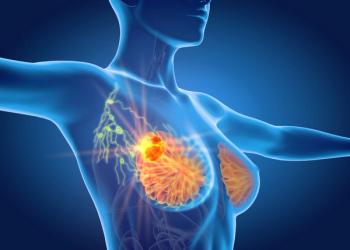
To Treat or Not to Treat DCIS
Researchers from the University of Michigan have developed new technology to separate aggressive stage 0 breast cancer from nonaggressive forms.
Researchers from the University of Michigan have developed new technology to separate aggressive stage 0 breast cancer from nonaggressive forms. By delineating subtypes based on biomarkers, the Michigan team was able to observe varying degrees of aggressiveness, which may lead to new therapies.
In 2013, Laura J. Esserman, MD, MBA, and colleagues wrote about the phenomenon of overdiagnosis, which sometimes leads to overtreatment. Although early diagnosis can lead to the best prognosis, the unintended consequence is that some patients seek treatment based on current recommendations that perhaps may be more treatment than they actually needed. Based on this finding of differing levels of aggressive subtypes of breast cancer in the earliest stage, as addressed in the JAMA
In DCIS, epithelial cells grow and multiply within ducts. Although it is commonly understood that DCIS lesions become invasive breast cancer, this is not always the case, nor has the fraction of DCIS cases progressing to invasive cancer been established, according to a study
The Michigan researchers developed and used a technique known as BRIM (biomarker ratio imaging microscopy) to help identify aggressive forms of ductal carcinoma in situ (DCIS) – which is what Dr. Esserman et al., suggested about the heterogeneity of DCIS subtypes. By combining traditional pathology techniques with mathematical analysis, researchers could separate the DCIS patient samples into those with a lot of cancer stem cells - which are highly aggressive - and those that resembled benign tumors. Out of 23 biopsy samples, they found that 22% of the samples had low scores, suggestive of very slow-growing, nonaggressive disease.
Mammograms have led to an increase in the number of DCIS diagnoses. This increase, however, does not correspond to a reduction in the number of patients with advanced breast cancer.
“A patient with DCIS is typically treated as if she has invasive disease, which is easy to understand. When women hear breast cancer, they’re petrified. And physicians are keenly concerned about outcomes as well,” said Howard Petty, PhD, professor of ophthalmology and visual sciences and of microbiology and immunology, University of Michigan, in a
Ideally, this new technology will lead to new treatment paths such as anti-stem cell therapies for patients with the most aggressive forms of breast cancer and potentially enabling patients with nonaggressive forms of DCIS to undergo less invasive treatment.
“This approach is going to be a new and powerful one. It works because we’re looking at it mathematically,” said Petty.
Newsletter
Stay up to date on recent advances in the multidisciplinary approach to cancer.

















































































